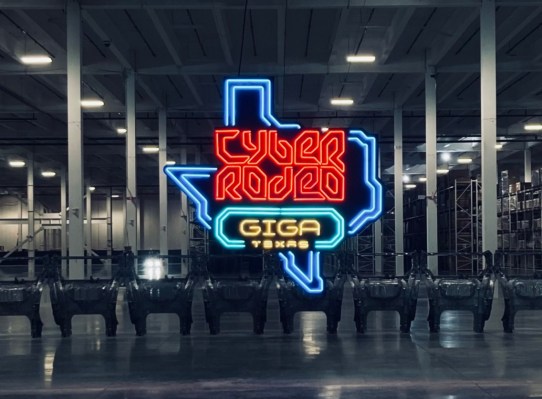Tesla Investor Day is upon us, an occasion where shareholders and superfans will make their pilgrimage to the company’s Gigafactory Texas, located near Austin — while the rest of us tune in via livestream on YouTube or Twitter — to hear exactly what CEO Elon Musk has planned for the future.
Tesla Investor Day is scheduled to begin at 4:00 p.m. ET, or for those on the ground in Austin, 3:00 p.m. CT. Historically, that doesn’t mean Musk will be onstage at the top of the hour. But hey, ya never know!
Earlier this year, Musk tweeted that he would present the long-awaited and often teased Master Plan 3 during the company’s investor day, which will be held at the company’s Gigafactory Texas. Those who attend in person will be able to see its production line and discuss with its leadership team topics like the company’s long-term expansion plans, generation 3 platform and capital allocation, according to the company.
What will Musk announce? Get out your bingo cards.
TechCrunch has a few theories and wishes.
Musk first hinted about the Master Plan 3 last March with vague goals to scale operations at Tesla to “extreme size.” He also leaned into themes like AI and noted that this next stage in the plan would include his other companies SpaceX and The Boring Company. Later in the year, Musk revealed more details about his Master Plan 3. Per a companywide meeting, the plan’s raison d’être is: “How do you get to enough scale to actually shift the entire energy infrastructure of earth?”
Musk will likely discuss plans to build a new factory in Mexico, which the nation’s president confirmed publicly yesterday. Musk may also hint at or even show off a prototype of a new EV, because showing new, future products is like catnip for investors.
We’d like updates on existing products, like the status of the Cybertruck, the robot (remember that?) and plans for the branded “Full Self Driving” (FSD) software beta that recently was recalled after federal safety regulators warned the system could allow vehicles to act unsafely. Tesla has since postponed rolling out any more installations of FSD to customers until it issues a software update that fixes the problem.
For those wondering, what the heck is Master Plan 3? Is there a Master Plan 1? Yes, indeedy.
Musk posted a blog on Tesla’s website in 2006, outlining what he described as the Master Plan. That four-step plan began with creating a low-volume expensive vehicle and then using that money to develop a medium-volume car at a lower price. Profits from the medium-volume car would be used to create an affordable, high-volume car. And finally, the plan ended with “provide solar power.”
Many have noted that the Master Plan didn’t exactly go as planned. Tesla didn’t use profits to fund the Model 3 (it was unprofitable at the time) and its high-volume car is not affordable. But Tesla did produce the Roadster, and then the Model S and X (the medium-volume car) and finally the Model 3, which may still cost more than $40,000 but has proven to be a high-volume seller.
Part two, or Part Deux as it is named, came in 2016 with a plan to “create stunning solar roofs with seamlessly integrated battery storage,” expand Tesla’s EV product line to address all major segments and develop self-driving capability that is 10x safer than manual driving. The plan also promised owners would be able to leverage that self-driving into ridesharing so they could make money on their car when they’re not using it.
Tesla has not completed many of the items on that Part Deux to-do list. There are no driverless Teslas roaming the streets on their way to pick up passengers, and the Cybertruck, which presumably is part of the plan to expand the EV product line, has yet to launch.
So maybe Master Plan 3 will be committing to finish everything Tesla has started.
